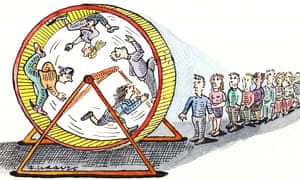India's leading offspinner of the 2000s fell away because of his tendency to overuse the doosra. Can he make enough of an impact in Bangladesh?
 If he is to enjoy further success in international cricket, Harbhajan Singh must remember that the offbreak is his stock delivery, not the doosra © BCCI
If he is to enjoy further success in international cricket, Harbhajan Singh must remember that the offbreak is his stock delivery, not the doosra © BCCIThere are a few boxes you want the ideal offspinner to tick:
1. Turns the ball
2. Gets the ball to drift in the air
3. Gets the ball to drop on the batsman
4. Extracts bounce
5. Has variations
6. Bowls an aggressive outside-off-stump line
7. Pitches fuller, enticing the batsman to drive off the front foot
About a decade and a half ago, when I first played the 17-year-old Harbhajan Singh, he had all of these qualities, even as a youngster. He was the perfect product of the SG Test ball, which offers a pronounced seam and allows the ball to grip the surface and, if maintained well, offers drift in the air too.
The key to achieving these attributes is that the ball must be delivered with the seam slightly tilted towards fine leg. That way it almost always lands half on the seam and half on the leather, and that allows it to grip and spin. If the position of the seam is maintained, the shine of the ball dictates that it drifts in the air, either away from the batsman or into him, depending which side the shine is on. The young Harbhajan was almost miraculously effective at this.
There were a few other things he could do that most of his peers couldn't. His high-arm action coupled with his height produced more bounce than other bowlers could, and so the fielders at short leg and backward short-leg were always in play. You couldn't simply offer a dead bat while defending, for the turn and bounce could take the ball in the direction of the two close-in catching fielders on the on side. Harbhajan would almost always bowl an aggressive outside-off-stump line and bowl full to entice the batsman to play against the spin, through the off side.
He was also the first high-profile Indian offspinner to bowl the doosra. But the good thing was that even when he had mastered it, the regular offbreak continued to be his stock ball, and it produced more wickets for him. The doosra was a surprise ball to keep the batsman guessing, and in any case, Harbhajan's doosra didn't go the other way as much as it did for the likes of Saqlain Mushtaq or Saeed Ajmal. That was a good thing, for it ensured that his focus was always on the stock ball. The only thing that he didn't have at 17 was the strength to sustain bowling quality for long periods. Once he achieved that, he became the complete bowler.
He flourished, the wickets came, and Harbhajan became an important cog in the Indian bowling unit - so much so that for some time he was the first spinner in the side, even when Anil Kumble was in the squad.
His problems arose when India played Test cricket in countries where the Kookaburra ball, which has a less pronounced seam, was used. Anyone who has grown up bowling with an SG ball faces serious issues adjusting to a ball that has close to no seam - like the Kookaburra when it is old. With no seam to grip the surface, you have to put more revolutions on the ball to get purchase off hard and bouncy surfaces.
Harbhajan couldn't quite master the Kookaburra in his heyday, but that wasn't the reason why he was dropped from the Indian team. The reason was the lack of zip in his offspinners, and a corresponding decline in his wicket-taking ability.
In his last five Tests, he has nine wickets at 63.88 apiece. These matches span three series - two at home against England and Australia, and one away against England.
Every player is a product of his conditioning, and Harbhajan was no different. He was always the first to reach the nets of Burlton Park in Jalandhar, was the last to leave, and bowled through the net session. He would bowl a lot of overs, and bowl a lot of orthodox offspin. That is how your bowling muscles are developed: the more you bowl, the better the ball comes out of the hand.
 As T20 cricket took root, Harbhajan seemed to focus more on variations and lost his zing © BCCI
As T20 cricket took root, Harbhajan seemed to focus more on variations and lost his zing © BCCII think the reason his offies became less effective was that he didn't bowl enough of them in the nets and in matches. And that might have something to do with the introduction of T20 cricket and with playing a lot of one-day cricket. That's when it began to seem that Harbhajan had started focusing more on his variations than on traditional offspin.
His trajectory got lower, the speeds faster, and the line was more on the pads as opposed to outside off. He would bowl a lot of doosras and topspinners to minimise damage in the shorter format. Now, all of this was not unexpected - the demands of the shorter formats are such that most spinners go down that route when batsmen line them up to hit with the spin through the midwicket region; so if the ball holds its line or goes the other way, it becomes a little tougher for the batsman. But you need to be careful not to overdo the doosra, because you might lose your stock ball in the bargain. Also, there's still some merit in bowling slow in the shorter formats.
That's what Harbhajan did in the last season of the IPL, for Mumbai Indians. He was back to bowling a lot slower in the air, and the overwhelming majority of the deliveries he bowled were proper offbreaks. Now this could be because the doosra in general is less used on the circuit because of the crackdown against it, or the fact that Harbhajan almost always bowls the middle overs in a 20-over innings.
Even so, it was heartening to see glimpses of the old Harbhajan. Sterner tests await him now that he has made it back into the Indian Test side. His first assignment is the one-off Test match against Bangladesh. That will be played with a Kookaburra ball, and likely on a shirtfront. There will also be the small matter of another offspinner bowling from the other end, and comparisons will be inevitable. Comebacks after a certain age hang by a thin thread, so it's important he makes a mark in his first game back. Will Harbhajan do so?

